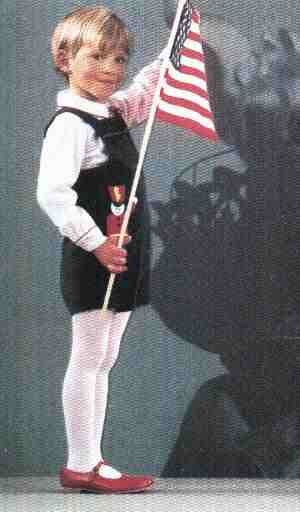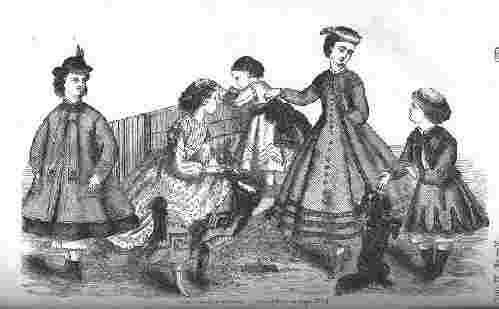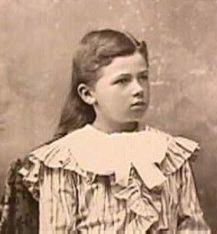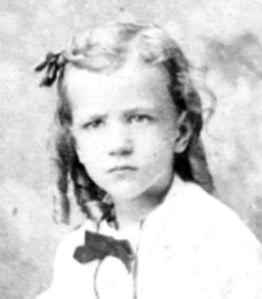
Figure 1.--Sometimes even modern images might confuse Do you know who wore shortalls? This one, however, is easy because of the child's hair.

Younger boys and not so very young boys wore dresses or dress-like skirts as part of kilt suits. Boys were also often dressed in smocks, especially in France and other continental countries. Pinafores were less common--but even here boys were sometimes also dressed in pinnies. Often boys did not have their hair cut until they were breeched, allowed to wear knee-pants and trousers. Some boys even wore long, curled hair after they were breeched. Some of the dresses worn by boys were identical or nearly identiacal to those worn by their sisters. All of this makes identifying the gender of the chidren in 19th century photographs, drawings, or paintings difficult unless details on the image are available, making it possible to identify the the children. HBC has provide some guidelines for determining the gender, although admittedly the are only rough guidelines. The authors believe,

Figure 1.--Sometimes even modern images might confuse Do you know who wore shortalls? This one, however, is easy because of the child's hair. |
We have loaded some images on this page. Some are easy. Others are more
difficult. Some are difficult and we haven't really
figured out yet. At any rate, see if you can determine the child's gender.
Then click on the image to see if you were correct. (The link will
take you to the page where the image is discussed.) Good luck.

Figure 9.--.This drawing from am 1867 fashion magazine includes one boy. Can you tell which child is the boy? |

Figure 10.--This is probably an immage from the 1880s. It is rather a diificult image. Actually this was a very important day in this child's life. |

Figure 11.--This may look like a French image, but it is an American one. |
Navigate the Boys' Historical Clothing Web Site:
[Return to main quiz page: Main quiz page]
[Introduction]
[Chronology]
[Clothing styles]
[Activities]
[Countries]
[Biographies]
[Bibliographies]
[Contributions]
[Boys' Clothing Home]
